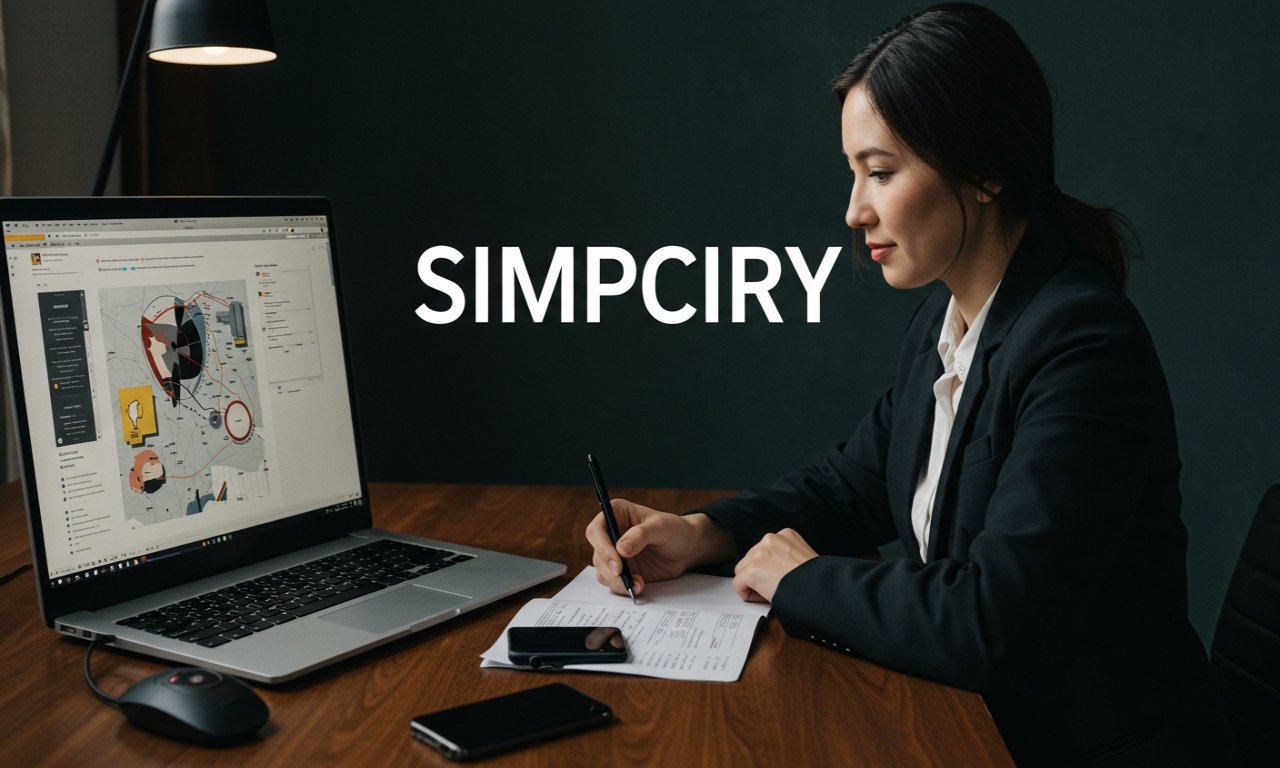In today’s whirlwind of choices, simpciry has begun to capture attention as a concept that blends simplicity, clarity, and intentionality. Though still emerging and loosely defined, simpciry aims to reduce clutter—physical, digital, or mental—and help people focus on what matters most. This article will explore what simpciry is (or may become), how it’s being used, the advantages and challenges it brings, and where it might lead in the coming years.
Let’s unpack the idea of simpciry without overusing the term—keeping it under 30 mentions—and see how it might shape a more mindful approach to life.
What Is simpciry?
At its core, simpciry is a portmanteau hinting at “simplicity” and “clarity.” It refers to a lifestyle philosophy, design aesthetic, or mindset that values the removal of excess and the amplification of essential elements. In many sources, simpciry is treated as more than minimalism—it’s minimalism with purpose, focused on balance, usability, and emotional space.
You Might Also Like: Soutaipasu
Rather than just empty spaces or neutral tones, simpciry prioritizes meaning. Everything present in your life or environment should contribute to value, rather than distract from it. It may apply in décor, workflows, digital interfaces, relationships, or habits.
Origins & Rise of simpciry
While minimalism and simplicity have long existed in philosophy, art, and design, simpciry is a more recent conceptual adoption in popular culture and digital discourse. It has gained traction through lifestyle blogs, design theory, and social media conversations.
In a world saturated with constant notifications, overloaded feeds, and relentless advertising, people are seeking refuge in less. Simpciry emerges as a reaction to complexity—a response that says, “What if we do away with distraction and live more consciously?”
As more individuals, brands, and creators adopt simpciry principles, it appears not just as trend but a response to modern overload.
Core Principles of simpciry
To better understand how to live or design around simpciry, we can break it into a few guiding tenets:
Intentional reduction
Simpciry is not about deprivation, but about removing what is unnecessary. It encourages asking: Does this add value? If not, it might be removed.
Clarity over ornamentation
Visual, informational, or behavioral clarity is key. Excess decoration, fluff, or noise is avoided so that what remains is comprehensible, meaningful, and accessible.
Functionality with elegance
Things should work beautifully—and simply. Simpciry seeks a balance where form follows function, but aesthetics are not ignored.
Emotional breathing space
Simpciry aims to reduce cognitive weight. Less clutter means less mental fatigue. Emotional calm becomes a design goal.
Aligning with sustainability and mindfulness
Because simpciry discourages overconsumption, it naturally dovetails with sustainable practices—choosing quality over quantity, ecological materials, and durability.
How simpciry Shows Up in Real Life
Where can we see simpciry in action? Let’s look at several domains:
Home & Interior Design
Minimal color palettes, sleek furniture, and open spaces characterize simpciry in design. Each object is chosen with care rather than filling every corner.
Digital Interfaces & UX
Websites, apps, and interfaces embracing simpciry shed unnecessary visual clutter: minimal icons, whitespace, clear navigation. The goal is that users reach what they need without distraction.
Daily Routines & Habits
From simplified morning routines to reduced multitasking, simpciry shows up when people intentionally streamline their tasks, reduce digital noise, or limit choices to essentials.
Workflows & Productivity
In professional settings, simpciry may influence lean work flows, minimal meetings, fewer tools (but better ones), and clearer priorities. Reducing “tool clutter” is part of the ethos.
Brand & Product Strategy
Some companies adopt simpciry as part of their branding—designing products that are intuitive, minimal, and aligned with calm living. This resonates in sectors like tech, fashion, wellness, and interior goods.
Advantages of Following simpciry
Why might someone adopt simpciry? The benefits often cited include:
- Reduced stress: Less visual and mental clutter can promote emotional ease.
- Better focus and productivity: When distractions are removed, attention narrows to what matters.
- Cleaner aesthetics and coherence: Environments or designs feel cohesive, elegant, and more harmonious.
- More mindful consumption: Encourages buying less, choosing quality, and thinking before acquiring more items.
- Sustainability alignment: A simpler life often means a smaller ecological footprint.
- Emotional clarity: With fewer distractions, internal priorities and values become clearer.
Challenges & Criticisms
However, simpciry is not without its difficulties or downsides:
- Risk of sterility: Too much simplicity can feel cold or lacking personality if not balanced with warmth.
- Elitism in practice: Some argue that minimalism and simpciry can become status symbols—only accessible to those with resources to pick and choose.
- Loss of spontaneity: In overly curated simplicity, opportunities or joy from messiness may be lost.
- Decision burden: Choosing what to remove can be overwhelming—simpciry itself demands decisions.
- Cultural variation: What counts as “excess” or “simplicity” depends heavily on cultural norms and individual tastes.
- Over-simplification: Complex systems sometimes require complexity; trying to force simpciry may hinder functionality.
Practical Steps to Embrace simpciry
For those interested in applying simpciry in daily life, here’s a roadmap:
- Audit: Identify areas that feel cluttered—physical rooms, digital folders, subscription services.
- Define your essentials: What truly matters in those spaces? Let that guide what stays.
- Remove iteratively: Don’t remove everything at once; test and adjust.
- Design mindfully: Use clean lines, neutral palettes, and whitespace in design.
- Limit choices: Fewer fonts, fewer design variations, fewer decisions.
- Set boundaries with technology: Notifications off, limited apps, focused screen time.
- Maintain regularly: Simpciry is a habit, not a one-time fix—regular resets help.
- Stay flexible: Simpciry doesn’t mean rigid minimalism; allow for warmth, personality, and adaptability.
simpciry in the Digital Era & Future Outlook
As we move further into a digital age overflowing with data, content, and options, concepts like simpciry may become more essential. Several trends suggest its relevance:
- Interface trends: More apps and platforms are leaning toward minimal, calm UX designs.
- Attention economy reactions: People push back against endless scrolling—seeking spaces that let them breathe.
- Conscious consumption: Increasing interest in slow living, minimalism, decluttering, and mindful spending.
- Hybrid & remote work: Blurred boundaries encourage people to simplify their workflows and spaces.
- AI and automation: Tools may help achieve simpciry by automating many small decisions—reducing cognitive load.
If simpciry remains more than a buzzword, it might become a guiding principle in interface design, product development, lifestyle branding, and mental health practices.
Examples & Inspirations
To ground simpciry more tangibly, here are some illustrative examples:
- A living room with only essential furniture, neutral tones, and natural light—no superfluous décor.
- A website with a clean UI: few elements, clear navigation, limited palette, intuitive layout.
- A day where your tools are just a notebook, one digital app, and a few intentional tasks.
- A brand identity that uses refined typography, monochrome or muted colors, and storytelling rather than flashy visuals.
- A wardrobe curated down to pieces you love and wear often, rather than a closet full of forgotten items.
Conclusion
simpciry is a concept that speaks to our time: a world overflowing, vying for attention, and burdened by clutter. Whether you adopt it as a design philosophy, lifestyle shift, or digital mindset, simpciry encourages clarity, purpose, and calm. While there are risks of over-sanitization or rigidity, the core promise is compelling: live with less that distracts, more that uplifts.
As you explore simpciry in your life, consider your own values, balance function with beauty, and allow space for adaptation. The goal isn’t perfection but a more intentional, meaningful way of being.
If you like, I can also pull up case studies or apps that embody simpciry principles so you can see it in action. Do you want me to get those?

